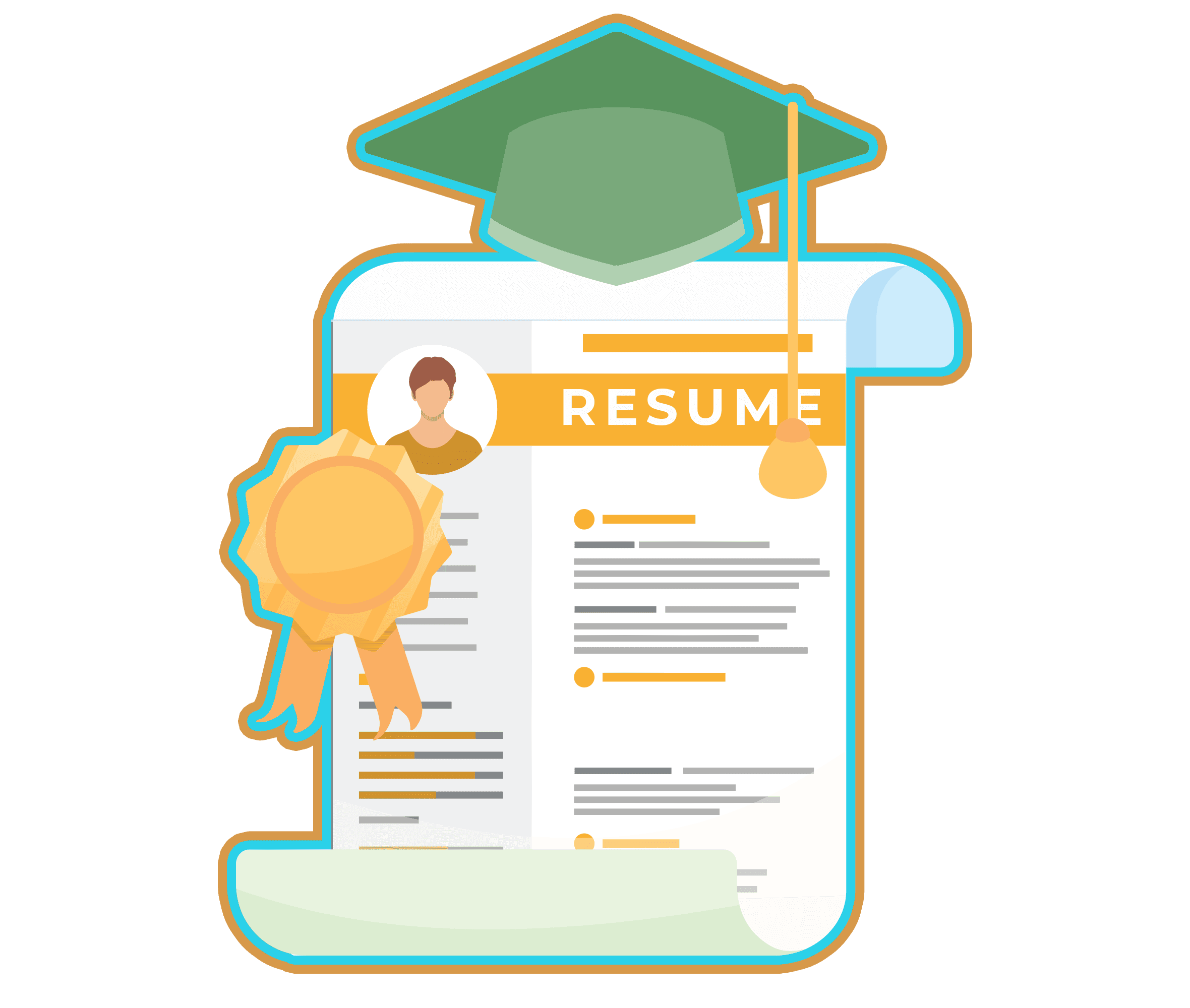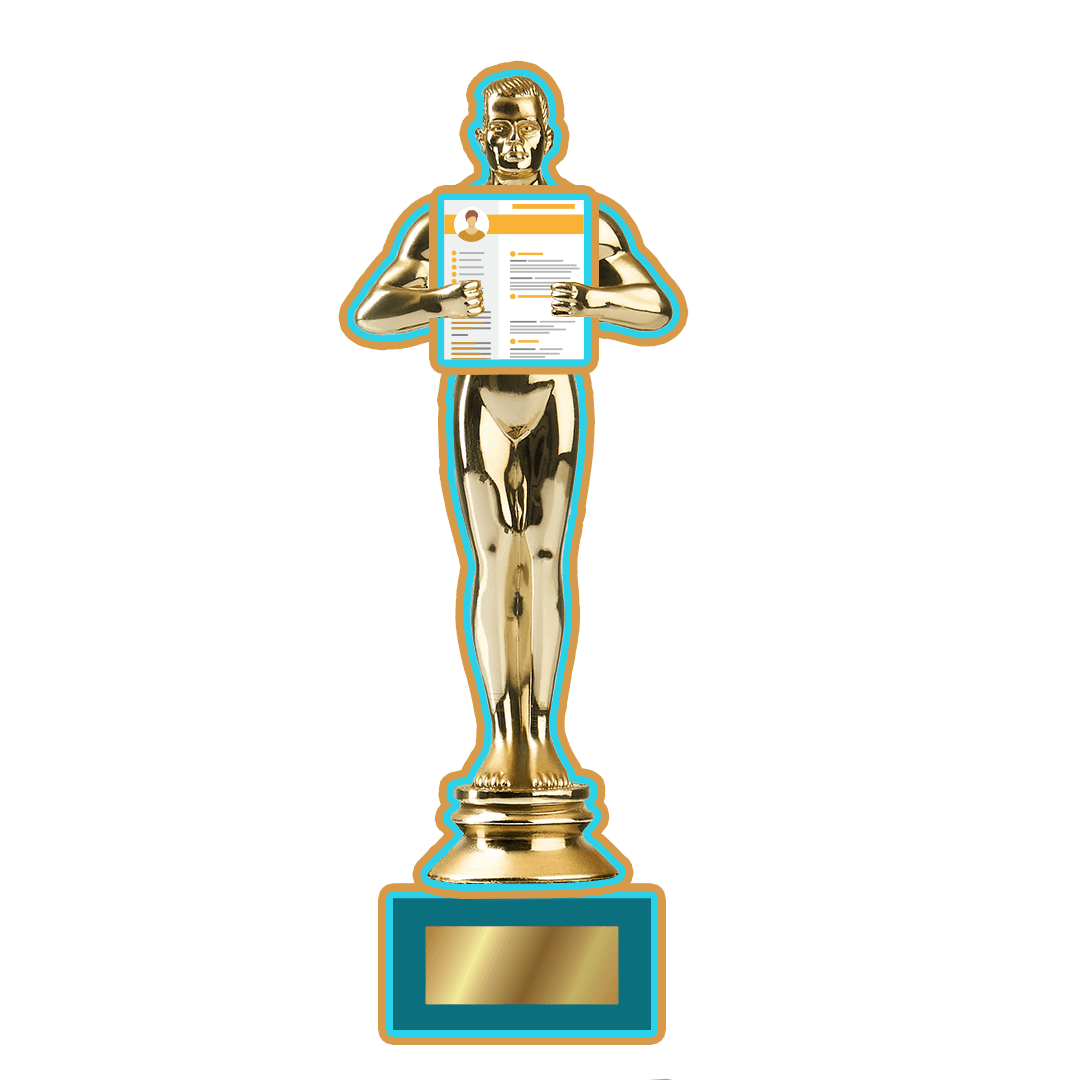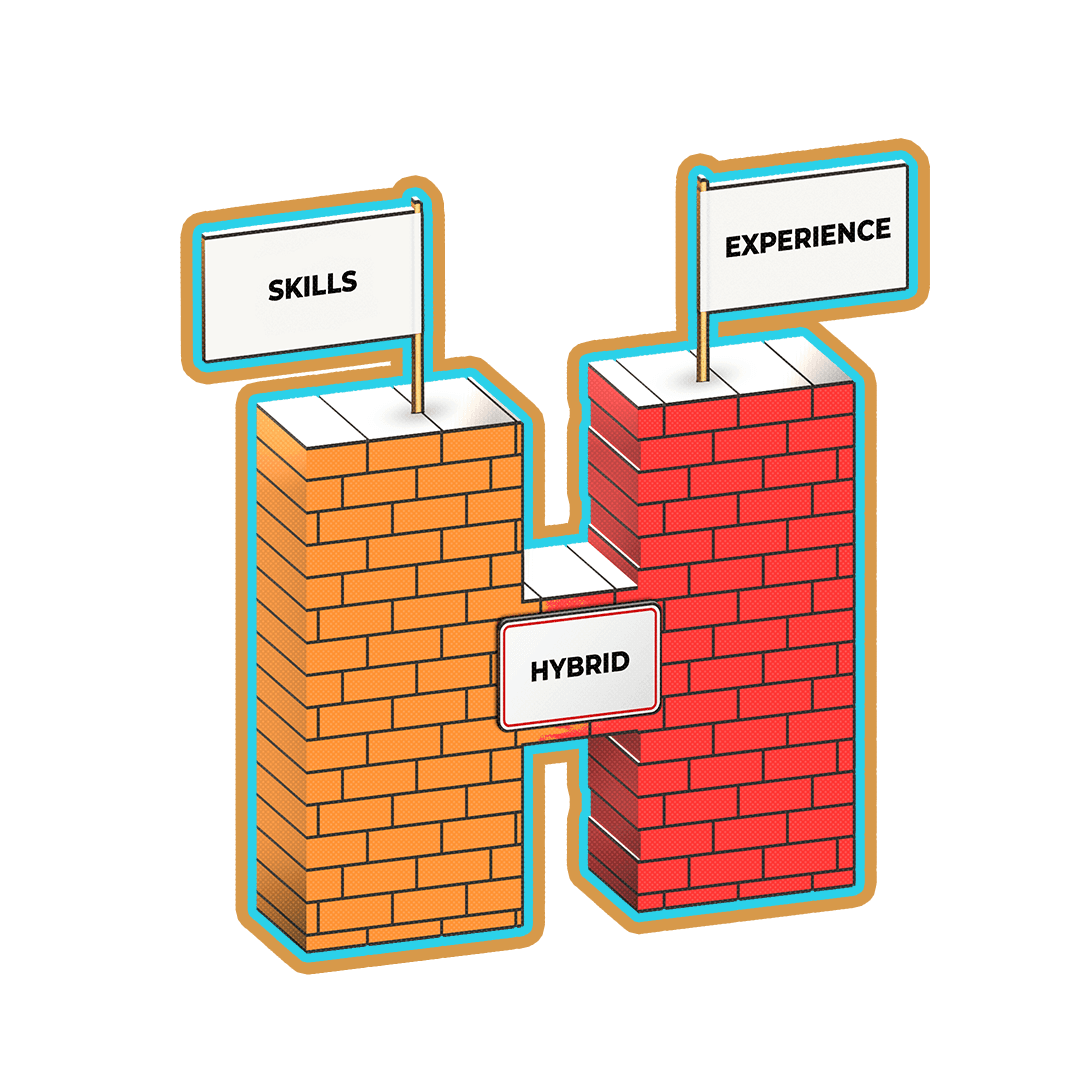A well-written human resources cover letter is essential to catch a recruiter’s attention and get the desired position. A human resources cover letter must include relevant information and be easily read. Applicants use many online templates, but a minimalistic and straightforward design is best.
To write a cover letter for human resources vacancies that stands out, it is vital to pay close attention to the main elements that make it effective and impactful. These components form the backbone of a well-crafted cover letter, showcasing suitability for the HR position being applied for.
Looking through various human resources cover letter examples online is advised to get an overall idea of what to include in an HR assistant cover letter. Information in a cover letter varies depending on the company, position sought, and the candidate’s work experience, so the cover letter must be tailored based on their achievements.
Researching the company and its ethos is essential to understand what they value in their employees and craft a cover letter they want to read. The cover letter for the human resources assistant is read alongside the applicant’s resume, so elaborating on the information provided in the resume is required rather than regurgitating it.
An HR professional cover letter aims to summarize the applicant’s accomplishments, demonstrate a thorough understanding of the role, and communicate how they are the ideal candidate. Ideally, the cover letter is three to four paragraphs outlining the candidate’s present-day experience.
What to include in a human resources cover letter depends on the position being applied for and the candidate’s current job experience. The candidate must look through the job description for keywords to understand what hiring managers are looking for and add those that apply to them.
The contact information must be up-to-date so the hiring manager easily reaches the applicant. The cover letter must be proofread to avoid any grammatical mistakes.
A recommendation letter for a human resources manager is written by an applicant’s acquaintance who knows them well (for example, an ex-employer, supervisor, manager, or professor) on their behalf and vouches for their qualifications and character. It is often used to support an applicant's job application.
How to Write a Human Resources (HR) Cover Letter
To write a cover letter for human resources vacancies that stands out, it is vital to pay close attention to the main elements that make it effective and impactful. The components form the backbone of a well-crafted cover letter, showcasing suitability for the HR position being applied for.
Below are the five key elements a human resources cover letter must contain.
Heading
The primary information in a human resources cover letter is the applicant’s contact information, including the candidate’s first and last name, phone number, and email address. A home address is added if the candidate feels comfortable sharing the information. The given email address must be formal and used mainly for professional purposes.
It is crucial to add the correct personal information. A hiring manager who wants to reach out for an interview uses the information provided.
The applicant must mark the date they are writing the cover letter for a human resource position after introducing the personal data and include the hiring manager’s personal information.
John AppleseedHuman Resources Intern(123) 456-7890Houston, TXJanuary 01, 2023Eric RodmanHiring ManagerBIG Company(987) 654-3210New York City, NY
Greeting
A salutation is a greeting used in professional writing, including a cover letter. How the potential employer is addressed indicates that the applicant knows how to follow business etiquette guidelines.
The ideal way to address the hiring manager when writing a human resources assistant cover letter is by using "Dear" with their first and last name. "Mr." and "Ms."/"Mrs.” are used if the preferred pronouns of the recruiter are known, followed by their last name. The employer’s name is found on the job posting, but in case of its absence, the applicant must look it up on the company website or LinkedIn profile, demonstrating the candidate’s strong interest in the position.
The applicant must start their human resources generalist cover letter with "Dear Hiring Manager" if the recruiter’s initials cannot be found. Correctly writing a salutation is crucial because it demonstrates professionalism and helps get to know the recruiter since the applicant works closely with the hiring manager if they get the job.
Dear Eric Rodman,
Introduction
The introduction to the HR assistant cover letter is the opening paragraph where the job contender writes about the position they are applying for, why they are interested in the job, and the work experience they have gained in similar roles. Hiring managers go through countless cover letters throughout the day, so catching their attention is crucial.
Emphasizing past work experience is vital to showcase what makes the contender the perfect applicant. Remember to highlight quantifiable accomplishments, like the proportion of increase in employee performance. Suppose an applicant doesn't have enough experience yet. The educational background is mentioned in the human resource entry-level cover letter, as well as the relevant soft and hard skills the candidate possesses.
The candidate must research the company's ethos and demonstrate alignment with their values, look up their key projects, and explain what they offer and bring to the table.
The opening paragraph presents the applicant’s management style if they were to get accepted, including how they want to assist the company's progress. Utilizing the last sentence of the introduction as a transition into the body paragraph is essential to construct a more cohesive HR assistant cover letter.
I'm writing to express my interest in applying for the Human Resources Assistant position at BIG Company. As a recent Psychology graduate with honors from Texas A&M University, I've successfully completed a 6-month internship program where I helped track employee records and screen and recruit over 30 potential candidates. I've always admired your company's emphasis on employee satisfaction and investment in employee wellness programs. My vast knowledge of psychological theory and practical experience gained during my internship makes me the perfect candidate. |
Body Paragraph
The body of the human resources cover letter needs to illustrate why the applicant is the right choice for the organization and show the hiring manager what makes them the perfect candidate. Ideally, it must include two paragraphs. The body paragraphs of the cover letter for a human resources assistant position must be used to elaborate further on the qualifications and experience the candidate has mentioned in their human resources manager cover letter and the information they’ve provided on their resume.
Highlighting relevant accomplishments, such as professional certifications, special projects, and awards, and avoiding using vague statements that apply to any applicant, like "Worked with team members to increase productivity,” is advised. Instead, opting for more specific achievements, especially those that are numerically measured, such as "Assisted resolving disputes among employees, resulting in a 12% decrease in complaint filings," is recommended. The applicant must elaborate on how these accomplishments translate into the company's—which they are applying to—success. Hence, the experiences mentioned have to be relevant to the position.
As a human resources intern at Real Deal Solutions, I was tasked with administrative tasks, like drafting and posting vacancy announcements, screening resumes, scheduling interviews with candidates, and updating internal databases with 100% accuracy. Through completing my daily tasks successfully, interview scheduling increased by 25%, onboarding completion improved by 30%, and time-to-fill reduced by 15%.My thorough understanding of the motivation-hygiene theory helped me assist employee conflict resolution. I looked through complaints, encouraged communication, and aided in the solution to raised issues. By the end of my internship period, complaint filings decreased by 12%.
Closing Paragraph
A strong closing line to the human resources generalist cover letter must express enthusiasm for the role, gratitude to the hiring manager, and a compelling call-to-action (CTA). The applicant invites the hiring manager to reach out for a job interview and state their preferred mode of contact in the CTA.
The candidate has the option to add a postscript (PS) to make their human resources generalist cover letter stand out. Here, another notable achievement or possessed skill is highlighted to ensure the recruiter keeps it in mind when reviewing the candidacy.
Crafting a powerful closing statement is as important as the introduction since it provides a final thought on what makes the job contender the best candidate.
The final paragraph ends with a closing salutation, like Sincerely or Best Regards, and the candidate’s full name.
I strive to improve employees’ work environment and ensure smooth and organized HR operations. I believe my social acumen can positively impact BIG Company.
Thank you for providing me with this opportunity. I look forward to discussing further how my unique skills and experience can help your team. I’m available for an interview at your convenience.
Sincerely,
John Appleseed
What to Include in a Human Resources Cover Letter?
What to include in a human resources cover letter depends on the position being applied for and the candidate’s current job experience. The candidate must look through the job description for keywords to understand what hiring managers are looking for and add those that apply to them. Below are the most common attachments for a cover letter for an HR recruiter.
- Date and Contact Information (Heading)
- Cover Letter Greeting
- Main Body
- Educational Background
- Current Work Experience
- Relevant Soft and Hard Skills
- Career Aspirations
- Closing Paragraph
Human Resources Cover Letter Examples
Below are professional and impactful cover letter examples for human resources with different features. The cover letters are customized according to any specialty.

Below are the key takeaways of why the HR cover letter example is good.
- Heading: The HR manager cover letter sample provides detailed contact information of the applicant, including an email address and phone number, which is vital for recruiters who want to reach out to applicants.
- Greeting: The salutation addresses the hiring manager by their name, adding a more professional and respectful tone.
- Introduction: The opening section of the recruitment manager cover letter concisely presents the applicant's experience while emphasizing why they are interested in the job position, allowing the recruiter to understand better what to expect from the cover letter.
- Body paragraph: The main paragraphs of the keyword provide more detailed information, such as the candidate's educational background, relevant work experience, applicable hard, soft, and technical skills, and quantifiable accomplishments in bullet points, making it easier to comprehend the applicant's impact on their previous job.
- Signature: The closing paragraph summarizes why the candidate is qualified enough to be considered for the position and expresses gratitude to the hiring manager while including a CTA asking to be contacted for a job interview.
- Postscript (PS): The PS gives additional relevant information to grab the hiring manager's attention, increasing the likelihood of the candidacy standing out and proceeding to the upcoming recruitment stages.
- Relevance: The information in the keyword is relevant to a human resources role, making it a powerful overview of the applicant's career.
- Formatting: The keyword is well-written and nicely organized, with a consistent design, making it easy to read and follow.
PRO TIP:
Another accomplishment or proud moment the applicant wants to draw attention to is added to the PS, as it is the last piece of information the hiring manager reads, ensuring a lasting impression.
HR Generalist Cover Letter

PRO TIP:
Strategically placing keywords in the cover letter increases the chances of standing out among other candidates when describing work experience and accomplishments. Many recruiters use applicant tracking software (ATS) as they screen candidates and have specific criteria and qualifications they're looking for to proceed only with those they deem fitting. Matching the keywords in the job description with the skills mentioned in the cover letter is vital.
Recruitment Manager Cover Letter

PRO TIP:
Including a referral, like in the HR cover letter example, helps attract the hiring manager's attention as they actively seek referrals when hiring for an open position. Applicants with a former colleague or acquaintance working at the company they are applying to send an email asking if they are inclined to provide a referral. Once the referee gives permission, the applicant confidently name-drops them in the human resources cover letter to build a stronger candidacy.
It is good to give a heads-up beforehand, even if the candidate is sure their acquaintance is okay with referring them, as they provide helpful insight about the company, its values, and the job opening.
The referral is mentioned in the opening paragraph, as the recruiter now has the opportunity to contact them directly to learn more details about the candidate. Now is the time to start considering networking and investing in building professional relationships at business events or on LinkedIn if the candidate doesn't have a referral.
Letter of Recommendation for Human Resources Manager
A recommendation letter for a human resources manager is written by an applicant’s acquaintance who knows them well (for example, an ex-employer, supervisor, manager, or professor) on their behalf and vouches for their qualifications and character. It is often used to support an applicant's job application.
A recommendation letter details why a candidate is fit for the position and that he possesses the required skills and requirements, as well as focuses on soft skills, like interpersonal skills and problem-solving. A candidate must have a wide range of skills highlighted in their letter. It is as essential as the candidate's human resources cover letter when securing the job. The letter provides employers with evidence of the applicant's experience, successes, and qualifications.
The letter's author must provide accurate and relevant information that reflects the applicant's capabilities, which helps employers make well-informed decisions. The letter must prove the candidate's qualifications and experience and portray the candidate favorably.
The applicant is asked to review the letter to check for any improvements that benefit them and increase their chances of earning the position after requesting a recommendation letter. The letter of recommendation includes the author's data so they are contacted for any questions from the potential employer.
Difference between a cover letter and a letter of recommendation. An HR manager cover letter is a document that accompanies an applicant's job application and states why they are good enough to be considered for the role, giving an overview of all the skills, qualifications, educational background, and work experience. It explains how he is qualified for the given position.
A recommendation letter for a human resources manager sometimes called a reference letter, is written by a former employer or colleague to attest to the candidate's expertise. It is sent to the hiring manager who is considering a candidate for employment. They offer insight into how the candidate impacted the team they were working with, serve as evidence of their accomplishments, and evaluate their professional performance and contribution to the business. It must be sent only if requested, as not all companies want to receive them.
Some job applications require the submission of a recommendation letter. A recommendation letter must be requested from a former manager or colleague to verify the candidate’s skills, traits, and work ethic. It must be someone the candidate has positive work experience with who trustfully vouchs for them. The applicant sends their referee a formal email with the necessary details, including their resume, job description, submission details, and requested deadline. A template to work form is sent, which helps lessen the referee’s workload and makes them agree to the request.
It is best to ask for it beforehand, at least two weeks before the due date, as it gives enough time for the referee to prepare it.
It is important to note that recommendation letters must not be generic and must be written for specific jobs.
The candidate must provide the referee with the job description when requesting a recommendation letter so they know which of their strengths and specific skills to highlight. A template helps guide the author of the letter's writing, but it needs to be more personal. Opting for solid and accurate adjectives is more beneficial than general words. The recommendation letter must confirm that the applicant is a strong contender for the job they are applying for.
An ideal recommendation letter is one page long and must not be longer than two. It needs to be appropriately formatted and concise. A well-organized recommendation letter must include the sections listed below.
- Date: The author must mention the day they are writing the reference letter.
- Recipient's personal information: The letter's author must include the recipient’s personal data, like their name, title, and address).
- Salutation: The referee must address the recipient by name if their name is known.
- Brief introduction: The letter’s author writes an opening paragraph indicating their relationship to the applicant, the author's personal experience with the applicant, and their expertise.
- Recommendation: The referee provides details on what makes the candidate a good fit and other specific examples of their skills or qualifications that match the role.
- Personal story: The author has an option to include a short tale elaborating on the candidate's traits.
- Closing: The writer of the recommendation letter summarizes the applicant's principal strengths and characteristics and explains why the applicant is recommended.
- Contact information: The referee adds their email address and phone number so the recipient reaches out to them.
- Signature: The referee must end the reference letter with their signature.
The letter must be positive and suggest the person is a strong candidate for the job. A business letter format and a formal and polite tone must be used. The recommendation letter needs to be focused on the main qualities and characteristics only and the most relevant achievements that match the job description. It has to be proofread.
FAQ
How to Format a Human Resources Manager Cover Letter
To format a human resources manager cover letter, it is crucial to include all the necessary information, such as the contact info, opening, body, and closing paragraphs, and have a proper structure. The main point is to have a clean and concise cover letter for human resources that is easy to read and understand.
The font must be an excellent professional minimalistic font that is easy to read with an appropriate size of 10-12pt, for example. The spacing needs to be 1.0 or 1.15 in between words. Proper spacing between paragraphs and sections of text (for example, between the date and salutation) must be appropriate. Headings need to be clear and professional.
The page margins need to be appropriate. It is optional to add borders to the cover letter for an HR generalist. However, it is better to opt for a more minimalistic approach. The file format must be correct and downloaded properly. It’s advised to download the file in PDF.
The cover letter must be proofread and carefully reviewed to ensure all the information, especially the contact information, is up-to-date and correct, ensuring there are no grammatical, spelling, or typos. Someone else is asked to read the cover letter for further insights.
How to Address a Human Resources Manager Cover Letter WITHOUT a Name
The best choice of salutation when a recruiter's name is unknown is "Dear Hiring Manager." A general greeting is better than omitting it altogether, as it respects cultural norms and professionalism.
Another good rule of thumb is to remain gender-neutral, which shows the applicant is inclusive and respectful, especially if they don't know the hiring manager’s name.
The job title of the person reviewing the application is used, like "Dear Hiring Recruiter," "Dear Human Resources Director," etc, if their position is known. The applicant has the option to refer to the hiring team, for example, "dear hiring team" or "dear recruiting team,” as, more often than not, the person reading the cover letter is not a head figure or several members of the HR department going through an applicant’s letter.
The candidate must search for the hiring manager’s name through the company's website, carefully read the job description, and look at job boards and social media like LinkedIn if they want to address the addressee by name.
The candidate must consider calling the company front desk, telling the receptionist the position they are applying for, and asking who the hiring manager for that department is, making sure they get the spelling right for the manager’s name and verify it with the office clerk.
It’s best to avoid using the time of the day like good morning or good evening in the salutation for a human resources cover letter.
What are Good Keywords in a Human Resources Manager Cover Letter?
Using powerful buzzwords in a human resources manager cover letter helps an applicant stand out from the other candidates.
Action Keywords. Adding a different mix of action verbs helps visualize the skills the applicant needs to accomplish, and these verbs show how they complete those duties. A list of the most commonly used action keywords is given below.
- Attained
- Innovated
- Planned
- Supervised
- Spearheaded
- Developed
- Increased
- Cultivated
Company Values Keywords. Incorporating company values buzzwords in a human resources generalist cover letter shows the applicant is the type of individual the company seeks. Examples are listed below.
- Competitive
- Respectful
- Enthusiastic
Hard Skills Keywords. Complex skill-specific and measurable things that are learned through education or training.
- Finance Skills
- Legal Knowledge
- Human Resources Information Systems (HRIS)
- Computer Proficiency
Soft Skills Keywords. Soft skills are personality traits learned and developed over time. People use many different soft skills that are crucial for everyday tasks. The keywords listed below are commonly used.
- Detail-Oriented
- Project Management
- Organizational Skills
- Conflict Resolution
- Interpersonal Skills
Education Keywords. The hiring team needs to know if the applicant possesses the required education, therefore, the applicant must include any degrees, certificates, and licenses they have earned and whether they took part in any training programs.
- Bachelor's Degree in Human Resource Management
- Master's Degree in Human Resources Development
- MBA in International Management
Job Description Keywords. Incorporating keywords from the job description is good because they show what the job poster looks for. For example, the keywords below are used when a company seeks a motivated and analytical HR professional.
- Diligent
- Resourceful
- Focused
- Confident
- Tactful
Industry Terms. Using industry terminology shows employers that an applicant is qualified and has experience in the human resources field. These terms must be applied with intention and not randomly. Below are some examples used in a human resources generalist cover letter.
- Benchmarking
- Labor Relations
- Recruitment
- Contract Negotiations
- Documentation
- Talent Management
How to Write a Letter of Interest for a Human Resources Manager
To write a letter of interest for a human resources manager, the job seeker must follow certain rules, like tailoring the letter to each organization and using the proper structure. A letter of interest is when an applicant messages a company, highlighting their skills, strengths, qualifications, and experiences, inquiring about any open job opportunities. An HR manager cover letter differs from a letter of interest for a human resources manager because it is written in response to a job listing, while the latter is usually sent without solicitation. A letter of interest is often called a "letter of intent" or "statement of interest."
A letter of interest explains why they seek employment in the company, while an HR manager cover letter shows that the applicant possesses relevant skills for the specific position. It is more broad and general and helps the recruiter decide whether or not the company has any future job opportunities that align with the applicant’s expertise.
A letter of interest is sent at any time, while a cover letter for human resources is only sent when there is a job opening. Some companies do not post their vacancies at all, so a letter of interest is an excellent way of displaying a job seeker’s interest in working for the company.
Some open positions are not advertised. So, there are a lot of potential job opportunities that are not advertised on job search sites.
A letter of interest must be written for each company and tailored to each organization accordingly. It has similarities in structure with an HR assistant cover letter. Some key elements that must be included in a letter of interest include the date, applicant’s contact information, employer's name and contact information, greeting, introduction, body paragraphs, closing statement, and signature.
Introduction paragraph. Explains the primary purpose of the inquiry. Why is the applicant interested in working for the company? Are there any goals, products, or other qualities that stand out to the applicant?
Body paragraphs. Include some soft and hard skills the candidate possesses and work experience they have gained so far, using numerical data to measure their impact and key accomplishments. Include the main projects the applicant has worked on and their outcomes. Talk about an important milestone the applicant has reached.
Closing paragraph. Concludes the letter with a CTA. Expresses gratitude and mentions the most relevant skills and values of the company the applicant thinks make them a good fit, why they want to work there, and finishes off with their signature.
Below are some tips on writing a good letter of interest.
Find the right contact. Searching for who is responsible for hiring and their contact details, reaching out to them in a well-written email with the letter of interest attached.
Research the company. Reading their website, looking through their mission statement and social media, and reviewing other company news. The applicant must connect their values with the company's ethos and tie them into why they want to join the organization.
Consider networking. The candidate starts building connections with someone from the company to ask for additional tips.
Keep it personal. Another vital factor to remember when crafting a letter of interest is making the letter more personalized and unique. The candidate must avoid keeping it generic, especially if they want to stand out.
Proofread. An applicant must always proofread when sending any business-related document; their letter is not an exclusion.
Send a follow-up message. The applicant sends a follow-up email asking for an informational interview (which is not a job interview, so the main goal must be to gain more knowledge of what day-to-day life looks like at the office) if they have not received a response in over a week.




